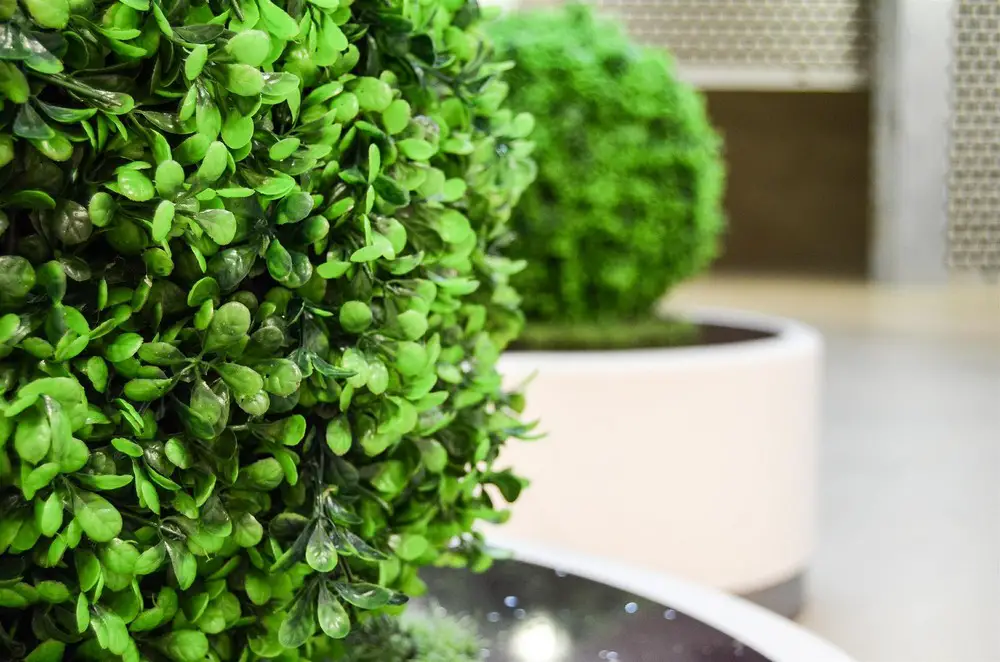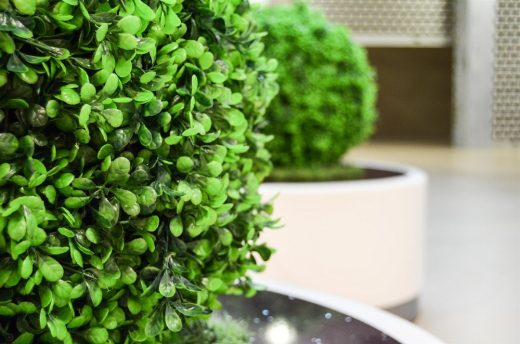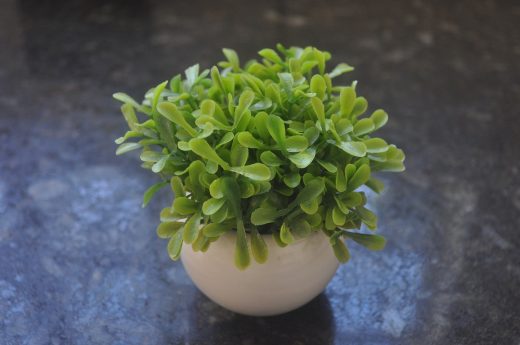Are artificial plants environmentally friendly? Plastic interior flowers and hedges guide, Planting
Environmentally Friendly Artificial Plants Guide
post updated 10 February 2024
Living green walls are all the rage these days, and it’s easy to see why – they are simply stunning! But, keeping real plants alive can be a lot of work especially if you don’t have a green thumb or the space, but don’t let that stop you from having the green wall of your dreams!
Artificial plants can be a sight to behold especially now, when they are made to look oh-so-real! With modern technology and innovation, it’s hard to even tell the fake from the real. As they require close to zero maintenance, these fauxliage are fast invading homes and places of businesses around the globe. But, many eco-conscious people are wondering – is it environmentally friendly?
29 December 2021
Are Artificial Plants Environmentally Friendly?
While there are a lot of myths and misconceptions out there surrounding fake plants which may not be entirely true, the truth is there are a lot of plus sides to fauxliage and it can be more eco-friendly than their real counterparts, surprisingly!
For starters, many assume artificial plants are harmful to the environment, simply because it is made from plastic. This is because from young, we’ve been taught that plastics are bad due to plastic pollution which has become one of the most pressing environmental issues today. With the ever increasing production of disposable plastics this has overwhelmed the world’s ability to deal with plastic waste. While people may think all plastics are bad, that might not be the case at all.
Is all plastic bad?
Plastic is good and here’s why. Plastic has revolutionised the world. Plastics have made possible the development of computers, mobile phones and even lifesaving modern medicines. However, the single use and disposable plastic has cultivated the throw-away culture bringing severe environmental consequences. Plastic is not the problem, it’s how people choose to use it. This bi-product of modern living which is fuelled by convenience and since this one-time use plastics are so affordable and easily accessible, this has led to an influx of plastic waste in the environment.
Dr. John Williams, a renowned sustainable plastic researcher shares that plastics are a part of modern life that cannot be avoided. However, we would need to adapt and adopt more sustainable practises which are less destructive to the planet
Less carbon emissions
These days, many artificial plant manufacturers are adopting earth friendly production methods and one such manufacturer in Australia is Designer Plants. They make earth friendly artificial hedges which produce much less carbon emissions by comparison emitting only 20% of the overall emissions for a living vertical garden and since fake plants require no maintenance such as watering, fertilising and soil replacement, carbon emission is only emitted during manufacturing, transportation and set up.
Rest assured, when purchasing earth friendly artificial hedges you can be sure you’re getting high quality eco faux plants which are safe and ROHS compliant, which means it is free of toxic chemicals such as lead, mercury, boric acid, cadmium, hexavalent chromium, polybrominated biphenyls, polybrominated diphenyl ether and heavy metals.
When you choose eco-friendly artificial plants, you reduce your carbon footprint and often end up saving on maintenance costs in the long run. Earth friendly greenery contains no harsh chemicals and is 100% safe for your family and pets and are 100% recyclable too, unlike real plants which cannot be recovered after it dies.
100% recycled products
By choosing 100% recycled artificial plants you can enjoy the beautiful sight of high quality greenery without the negative impact on Mother Earth, the community and our future generation. As fake plants are designed to last through the years, there’s no need to keep replacing them often. However, when the time comes for it to be replaced it can be recycled.
Customers can send over their old green wall for disposal in-person or by post to their shop in Moorabbin, Victoria where it’ll be recycled to be re-homed or used to create other products such as pots and planters significantly reducing the amount of waste in landfills!
You won’t have to worry about recycling so soon though, as the artificial green walls are made from high-grade PE soft plastic and is backed with a 5 year anti-fade and anti-crack guarantee, it’s designed to last for years and years in Australian weather, even dry or windy conditions.
Plus, the cost to recycle is entirely borne by them and you’ll get 10% off your next order for a new green wall.
Are Real Plants Better Over Plastic?
While eco-friendly artificial plants are unable to clean the air and create oxygen unlike a living plant, it still has other many benefits such as lifting your mood after a long day! Truth is, not everyone has the pleasure, time or ability to care for real greenery. Some people also have allergies to pollen and common bacteria found in soil.
However, through fake plants now everyone can get to enjoy the beautiful sight. Take for example hospitals – recuperating patients will now get to enjoy aesthetically pleasing greenery while being cooped up or confined to their rooms and beds all day! Never doubt the benefits of pretty flowering plants!
With faux plants you will not need to worry about having a green thumb, and can choose any plant you like without the hassle and allergies.
Still can’t decide between the two? Mix it up and get the best of both worlds. Choose which works best for you.
Comments on this Environmentally Friendly Artificial Plants article are welcome.
Building Articles
Residential Architecture
Plants
Garden Plants
Water garden and landscape with aquatic plants
How to Take Care of Your Growing Plants in the Garden
Comments / photos for the Are Artificial Plants Environmentally Friendly? page welcome







